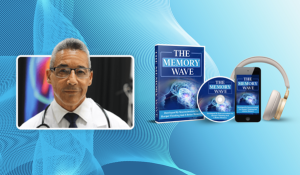Nearly a million new businesses were launched in the UK last year, whilst a further 5.5 million were started in the USA. This sounds impressive… until you consider that around 60% of those businesses will likely fail within just their first three years. Which is why securing the right small business loans, with the right lenders, is critical to ensuring your start-up’s success.
Follow our guide to discover the 5 financial steps you’ll need to take in order to secure small business start-up loans for your company. We’re confident that with them you’ll be better placed than ever before to properly finance your fledgling business—or turn your idea into a fully-financed business plan.
The challenges of starting a business and how a loan can help
Starting your own business is often a dream come true. Unfortunately, keeping that business afloat can be a real struggle—the challenges ranging from uncertainty in the global market to high interest rates and fierce competition in your industry.
Thankfully, it’s not all doom and gloom. The key to success is relatively simple; it lies in preparation, planning, and proper forecasting of your business’s finances.
To ensure those finances are capable of seeing you through the first few years of trading and into calmer waters, you’re probably going to need some small business loans to keep you afloat.
What types of loans and financing plans are available to small businesses?
Traditionally, bank loans for businesses are the first avenue worth exploring, but with high interest rates in the UK and elsewhere, not every new business will be able to secure financing this way.
Below is a list of small business financing options you might consider exploring:
- Crowd funding: Calling upon your community and target market can be an effective way to raise the initial funds you need to open your doors or start trading online; though it’s worth remembering most community investors will want something in return, like recognition, membership, discounted products and so on.
- Government grants: Depending on your industry and business idea, there may be government grants available to which you could apply for a tax-free lump sum. For example, an eco-grant to help purchase machinery for a new green energy startup.
- Private grants: You should also have a look for private organisations which might offer grants for startups in your sector, such as in the arts.
- Venture capital: For startups with high growth potential—especially those in finance and tech—you could also explore financing from venture capitalists or VC firms, looking to exchange early-stage financing for stakes in your company.
- Angel investors: The unicorn of startup financing, angel investors are wealthy individuals keen to support you in your new business by offering startup capital, often either as a zero-interest or low-interest loan, or even as a gift. These, of course, are rare.
How to obtain a small business loan for your start-up in 5 simple steps
There’s lots of competing advice on the internet about how to get a small business loan, but we like to keep things simple and straightforward. Here are 5 carefully-constructed steps to help you secure financing for your business whilst covering all your bases.
Step 1) Have a solid business plan and an understanding of your finances
The most important part of acquiring a loan for your business is writing up a solid business plan. A good business plan not only outlines what your business idea is, but how you will put it into action and make the money side of things work. You can draft a business plan yourself, or seek professional business planning support from local folk who know what makes a startup tick.
There are typically 7 key parts to a successful business plan:
- Executive summary
- Company description
- Breakdown of your products/services
- Analysis of the market
- Operations strategy
- Company structure and management team
- Financials, including your balance sheet, cash flow statement, expenditure budget and projected income
Step 2) Demonstrate a strong cash flow, collateral, and industry knowledge
Key to securing a small business loan for your company will be the ability to show potential lenders that you know what you’re asking for, why, and how you plan to pay it back.
By demonstrating other streams of investment (such as your own savings, grant money, and/or financial backing from other sources like crowdfunding), a lender will feel more confident in the security of their loan.
Similarly, you might consider putting up collateral in order to secure a larger loan. Attaching collateral to a loan is risky if you approach it recklessly, but if the numbers are right, then the larger loan could prove key to your business’s success.
Lastly, demonstrating a strong knowledge of your industry and your business’s potential for growth within it will be central to persuading a lender to back you—especially when there may be many other similar startups also asking for their support.
Step 3) Calculate the size of loan you’ll need and compare different lenders
With your business plan to hand and your cashflow projections made, you should have a good idea of how much money you’ll actually need from a small business loan.
The trick here is not to ask for too small a sum—many small business owners lower their ask for fear of rejection, only to find six months down the line that the loan’s run out and they’re not yet solvent enough to exist without it.
With a workable and realistic figure in mind, you can start to compare the offerings of different lenders (using our list of financing options above as a reference). Make sure to compare things like:
- Customer reviews and the reputation of the lender (if a loan’s terms seem too good to be true, they probably are!)
- The interest rate offered:
- Is it variable or fixed? Which is preferable given current market trends in your country/economic area?
- Is it competitive? Does the lender offer a deal like the interest-free payments during your first year of trading?
- The repayment plans on offer:
- Are they weekly, monthly or annual? Flexible or fixed?
Take your time comparing different lenders and their offerings before deciding who to approach first.
Step 4) Collect character references and determine your eligibility
It’s easy to forget the importance of the people behind the business—i.e., you. But banks, venture firms, communities and grant bodies will all want to connect on some level with you as a business owner. If your business plan is bulletproof but you seem unreliable or disorganised, that can be enough to put a potential lender off.
Gather character references and present a confident, positive, affable front to each lender you approach.
Moreover, have a clear sense of your actual eligibility for the loan in question. You’ll need to understand your credit score and your financial position—if you’ve been trading for a year already and can demonstrate strong cash flow and management, you will probably be able to access larger business loans than a startup which has yet to launch.
Step 5) Prepare the documentation and review the terms of your business loan
Last but not least, when it’s time to actually apply for your ideal loan, you’ve got to have all the right documents ready. Your chosen lender will almost certainly need the following:
- Yours (and your business partners’) personal details and photo ID(s)
- Your business plan
- Your personal and business tax returns
- Your business’s financial statements or budgets/projections
- Your business’s legal documents
Finally, when you’ve received a loan contract, make sure to review it carefully, ensuring you are comfortable with all the terms. Remember, you can always ask for professional advice to help you get your head around the legal and financial jargon.
Conclusion
Small business loans are critical to helping most small businesses and startups get up and running, and to survive those challenging first few years. Securing a loan for your business can feel like a daunting task—even an impossibility. But with some careful planning and preparation, securing sizeable and effective financing for your startup is well within your grasp.



